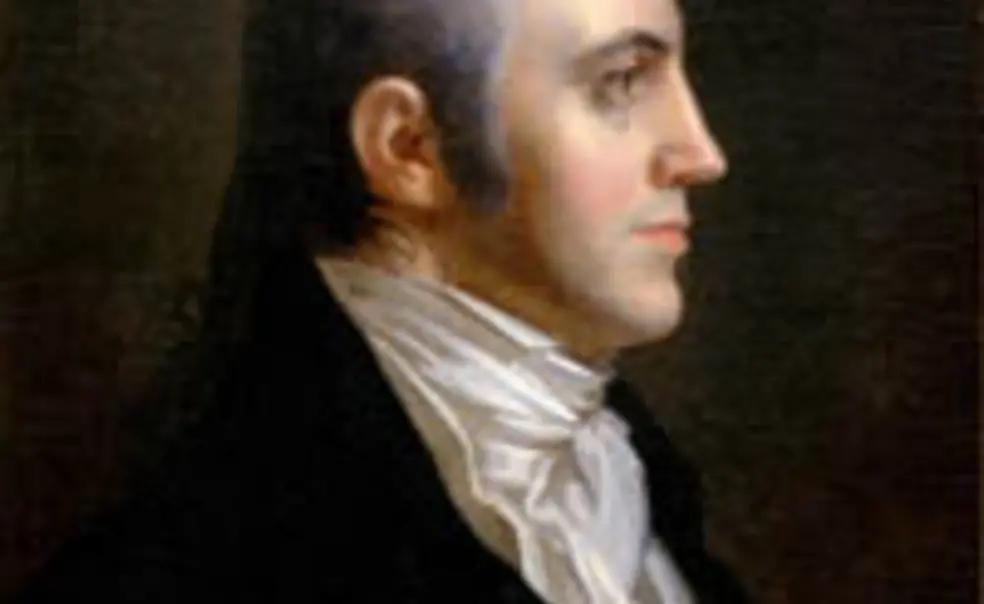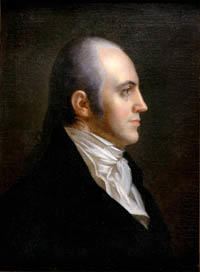Burr's legacy receives a fresh look, 200 years after his return to New York
Aaron Burr, Class of 1772. (Photo: John Vanderlyn’s portrait of Burr, via Wikimedia Commons)
By Mark F. Bernstein ’83
Aaron Burr 1772 has not fared well at history’s hands. Killing Alexander Hamilton in a duel will do that to a man’s reputation, but add to that Burr’s 1807 trial for treason — as the alleged mastermind of a plot to seize New Orleans and wrest Louisiana from the United States — and you have a pretty deep hole to dig out of.
The former vice president has had a few defenders over the decades, but Brian Davon Hardison, an Atlanta lawyer and political memorabilia collector, has emerged as a new one with an extensive exhibition of Burr material at the Grolier Club in New York City. The exhibition coincides with the 200th anniversary of Burr’s return to New York after a self-imposed exile following the treason case, which ended in his acquittal.
“Aaron Burr Returns to New York: An Exhibition on Burr and His Contemporaries” contains several hundred rare books, letters, and objects, most of them from Hardison’s personal collection, that trace Burr’s eventful life and try to rehabilitate his place in history. Certainly, there is much to work with. Burr had a brilliant military record during the Revolution, was a political leader in New York, and fought Thomas Jefferson to an Electoral College tie in the election of 1800, the only tie in American history. After 36 ballots, the House of Representatives finally awarded Jefferson the presidency, making Burr vice president.
Incredibly, Burr finished out his term after killing Hamilton in 1804, although his political career was ruined. He went west and became involved in a scheme to seize control of parts of the Louisiana Purchase and establish an empire, although the details remain unclear to this day. Jefferson had Burr arrested and tried for treason, but the case fell apart at trial. The exhibition includes several political pamphlets that were written about the duel, as well as replicas of the dueling pistols. It also includes many documents and papers relating to the treason accusations, several of which made the argument that Jefferson tried to frame his political rival while exonerating the real culprits in the plot.
Disgraced and broke after the trial despite his acquittal, Burr fled to Europe. Returning to New York in 1812, he practiced law and died in obscurity in 1836. His reputation as one of the nation’s great villains, however, endures, perhaps unfairly.
The exhibit at the Grolier Club, 47 East 60th Street in New York, runs through July 28.
Mark F. Bernstein ’83 is PAW’s senior writer.













No responses yet